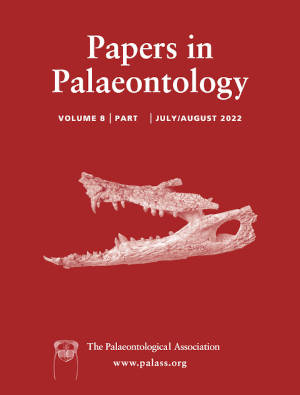Article: Cranial remains of Ramsayia magna from the Late Pleistocene of Australia and the evolution of gigantism in wombats (Marsupialia, Vombatidae)
Publication: Papers in Palaeontology
Volume:
8
Part:
6
Publication Date:
2022
Article number:
e1475
Author(s):
Julien Louys, Mathieu Duval, Robin M. D. Beck, Eleanor Pease, Ian Sobbe, Noel Sands, and Gilbert J. Price
DOI:
10.1002/spp2.1475
Abstract
Abstract Giant wombats (defined here as ≥70 kg) are found in the genera Phascolonus, Ramsayia and perhaps Sedophascolomys. Ramsayia is currently the most poorly known, having been described from mandibular and cranial fragments. Here, we report the most complete cranial remains attributable to the genus, identified as R. magna. The specimen provides new insights into the anatomy of the species and evolutionary adaptations to gigantism in Vombatidae. We record parietal sinuses in a vombatid for the first time, an adaptation to increased skull size relative to the braincase. The presence of a prominent premaxillary spine may indicate that the species possessed a large, fleshy nose. Both features are convergent on other large-bodied, non-vombatid extinct megaherbivores of Australia such as Diprotodon optatum. We use the cranial remains to examine the phylogenetic relationships of giant wombats to other vombatids. Phylogenetic analysis using maximum parsimony and Bayesian inference indicates that Phascolomys, Ramsayia and Sedophascolomys form a clade, suggesting a single origin of gigantism within Vombatidae. This origin may be related to the exploitation of poor-quality foods, and preceded extreme specializations observed in the cranial anatomy of the giant wombats. U-series and combined U-series and electron spin resonance (ESR) dating methods were applied to one fossil tooth. Age calculations systematically correlate the fossil remains to Marine Isotope Stage 5, and an age of c. 80 000 years can be proposed for this specimen. With only a single well-dated occurrence for this taxon, it is currently impossible to determine when and why R. magna became extinct.
